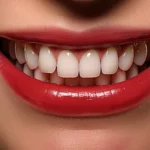Maintaining good oral hygiene is crucial for a healthy smile and overall well-being. Brushing and flossing are the cornerstones of an effective oral care routine, with flossing playing a vital role in removing plaque and debris from hard-to-reach areas between teeth. However, there may be instances where individuals experience tooth pain during or after flossing, leading to concerns and questions about the potential link between flossing and tooth pain.
Understanding Tooth Pain
To fully comprehend the connection between flossing and tooth pain, it is crucial to have a thorough understanding of tooth pain itself. Tooth pain, also known as dental pain or odontalgia, can range from mild discomfort to excruciating agony. It is a common dental complaint that affects people of all ages and can be caused by numerous factors.
There are several common causes of tooth pain, including tooth decay, gum disease, dental trauma, tooth sensitivity, and dental infections. Tooth decay, also known as dental caries, occurs when the outer layer of the tooth, the enamel, is damaged by bacteria and acids. This can lead to cavities, which can cause pain when they come into contact with hot or cold substances or when pressure is applied.
Gum disease, also called periodontal disease, is another leading cause of tooth pain. It is an infection of the gums and surrounding tissues, primarily caused by poor oral hygiene and the buildup of plaque and tartar. As gum disease progresses, it can cause inflammation, gum recession, and even tooth loss, all of which can contribute to tooth pain.
Tooth sensitivity is another common issue that can cause discomfort during flossing. It occurs when the underlying dentin layer of the tooth becomes exposed, often due to gum recession or enamel erosion. When dentin is exposed, it allows external stimuli, such as hot or cold temperatures, sweet or acidic foods, and even air, to reach the nerve endings within the tooth, resulting in pain or sensitivity.
Dental infections, such as abscesses, can also cause severe tooth pain. These infections occur when bacteria enter the tooth or the surrounding tissues, leading to the formation of pus-filled pockets. The buildup of pressure from the infection can cause intense pain and swelling.
Understanding the underlying causes of tooth pain is essential in determining whether flossing can contribute to this discomfort. While flossing is intended to promote oral health and prevent dental issues, it is important to ensure that proper techniques are employed to minimize the risk of exacerbating existing dental conditions or causing unnecessary pain. In the following sections, we will delve deeper into the mechanics of flossing, exploring the correct techniques and highlighting the benefits it provides for overall oral health. By understanding the importance of flossing and adopting the right approach, individuals can maintain a healthy smile without experiencing undue tooth pain.
The Mechanics of Flossing
Flossing plays a critical role in maintaining optimal oral health. While brushing cleans the surfaces of the teeth, flossing reaches the areas between the teeth and along the gumline, where a toothbrush cannot effectively reach. By removing plaque and food particles from these hard-to-reach areas, flossing helps prevent tooth decay, gum disease, and other dental issues.
To ensure the effectiveness of flossing, it is essential to understand the proper mechanics and techniques involved. Here is a step-by-step guide to achieving a thorough and effective flossing routine:
- Start with the right dental floss: There are various types of dental floss available, including nylon floss, PTFE floss, waxed floss, and flavored floss. Choose a floss that suits your preference and needs. If you have sensitive gums, consider using a softer, thinner floss.
- Take an adequate amount of floss: Cut a piece of floss measuring approximately 18 to 24 inches in length. This allows for enough floss to wrap around your fingers and reach each tooth without reusing the same section, which can spread bacteria.
- Hold the floss correctly: Wrap the ends of the floss around your middle fingers, leaving a small section between your thumbs and index fingers for maneuvering the floss. This technique provides better control and allows you to reach all areas comfortably.
- Gently guide the floss between your teeth: Slide the floss between two teeth using a back-and-forth motion, being careful not to snap or force it. Avoid applying excessive pressure, as this can cause gum irritation or damage.
- Form a C-shape around each tooth: Once the floss reaches the gumline, curve it into a C-shape around one tooth, ensuring it goes beneath the gumline. Gently move the floss up and down along the side of the tooth to remove any plaque or debris.
- Repeat the process for all teeth: Continue flossing each tooth, using a clean section of floss for each interdental space. Take your time to ensure thorough cleaning and pay attention to the back teeth as they are often neglected.
- Rinse your mouth and dispose of the floss: After flossing, rinse your mouth with water to remove any dislodged particles. Dispose of the used floss properly by wrapping it around your fingers and discarding it in a trash can.
By following these proper flossing techniques, you can effectively remove plaque and food debris, reducing the risk of tooth decay, gum disease, and other oral health problems. It is important to note that flossing should be done gently to avoid causing damage to the gums or tooth enamel. If you experience any discomfort or tooth pain during flossing, it is crucial to assess your technique and consider any underlying dental issues that may be contributing to the discomfort.
In the next section, we will explore the possible causes of tooth pain during flossing, helping you understand why some individuals may experience discomfort while practicing this essential oral hygiene habit.
Possible Causes of Tooth Pain during Flossing
While flossing is generally considered a safe and effective practice, there are instances where individuals may experience tooth pain during or after flossing. This discomfort can be a cause for concern and may lead to questions about the potential causes behind it. Let’s explore some of the possible factors that can contribute to tooth pain during flossing:
- Aggressive flossing techniques: Flossing with too much force or using a sawing motion can irritate the gums and cause them to bleed or recede. This can expose the sensitive root surfaces of the teeth, leading to tooth pain during flossing.
- Gum disease (gingivitis or periodontitis): Gum disease is a prevalent condition characterized by inflammation and infection of the gums. When gums are unhealthy and inflamed, flossing can cause discomfort or pain. It is important to address gum disease promptly to prevent further complications.
- Dental decay and cavities: If there are areas of tooth decay or cavities present, flossing can exacerbate the pain. When the floss comes into contact with a cavity or decayed area, it can cause sensitivity and discomfort. Prompt dental treatment is necessary to address these issues.
- Dental restorations: Dental restorations such as fillings, crowns, or bridges can sometimes cause tooth pain during flossing. If the restoration is not properly aligned or if there is an issue with the fit, flossing can irritate the surrounding tissues and cause discomfort. Your dentist can evaluate the restoration to ensure proper fit and alignment.
- Tooth sensitivity: Some individuals have naturally sensitive teeth, which can be exacerbated during flossing. Tooth sensitivity can occur due to various factors, including enamel erosion, gum recession, or exposed dentin. When flossing, the contact with the sensitive areas can trigger pain or discomfort.
It is important to note that experiencing tooth pain during flossing does not necessarily mean that flossing itself is the sole cause. In many cases, the discomfort may be a result of an underlying dental issue or improper flossing technique. It is essential to evaluate your flossing habits, technique, and overall oral health to determine the root cause of the pain.
If you consistently experience tooth pain during flossing, it is advisable to consult with a dental professional. They can assess your oral health, identify any underlying dental problems, and provide guidance on proper flossing techniques to minimize discomfort. In the next section, we will discuss prevention strategies and remedies for tooth pain during flossing, helping you maintain a pain-free oral care routine.
Prevention and Remedies for Tooth Pain during Flossing
Experiencing tooth pain during flossing can be both uncomfortable and concerning. However, there are several preventive measures and remedies that can help alleviate or eliminate this discomfort. By adopting these strategies, individuals can continue to maintain good oral hygiene without experiencing tooth pain during flossing. Let’s explore some of these preventive measures and remedies:
- Gentle flossing techniques: One of the most effective ways to prevent tooth pain during flossing is to ensure that you are using gentle and controlled flossing techniques. Avoid using excessive force or sawing motions that can irritate the gums and cause discomfort. Instead, use a gentle back-and-forth or up-and-down motion to slide the floss between the teeth.
- Consider alternative flossing methods: If traditional flossing causes significant discomfort, consider using alternative flossing tools such as water flossers or interdental brushes. Water flossers use a stream of water to clean between the teeth and along the gumline, providing a gentler alternative to traditional flossing. Interdental brushes, on the other hand, are small brushes that can effectively clean between teeth and are especially useful for individuals with larger gaps or braces.
- Use dental products for sensitive teeth and gums: There are specific dental products available in the market that are designed for individuals with sensitive teeth and gums. These include toothpaste, mouthwashes, and dental floss that are formulated to minimize sensitivity and provide relief. Look for products that contain ingredients such as potassium nitrate or fluoride, which can help reduce sensitivity and strengthen tooth enamel.
- Maintain regular dental check-ups: Regular dental check-ups and professional cleanings are crucial in maintaining optimal oral health. Your dentist can identify any underlying dental issues that may be contributing to tooth pain during flossing and provide appropriate treatment. They can also evaluate your flossing technique and provide guidance on proper oral care practices.
- Seek professional dental advice: If you are consistently experiencing tooth pain during flossing despite adopting proper techniques and using appropriate dental products, it is advisable to seek professional dental advice. Your dentist can conduct a thorough examination, identify any underlying dental problems, and recommend suitable treatment options to alleviate the discomfort.
It is important to remember that prevention is key when it comes to tooth pain during flossing. By maintaining a consistent oral hygiene routine, using gentle flossing techniques, and seeking professional dental care, you can minimize the risk of experiencing discomfort during flossing. Remember to listen to your body and address any concerns promptly to ensure the long-term health of your teeth and gums.
In the next section, we will conclude this comprehensive blog post by summarizing the main points discussed and emphasizing the importance of maintaining good oral hygiene practices.
Dental Floss: The Importance of Daily Use for Optimal Oral Health
Reach Mint Waxed Dental Floss

If you’re looking for an effective dental floss that can remove plaque and food particles, Reach Mint Waxed Dental Floss is a good choice that is accepted by the American Dental Association.
Pros
- With 55 yards of Reach, a mint flavored, waxed dental floss, you get an extra-wide cleaning surface specifically designed for wide spaced teeth.
- Helps protect your teeth and gums by effectively removing plaque from hard to reach places that brushing alone may miss.
- Reach waxed dental floss removes small food particles that get stuck between the teeth and around gums, and that can lead to bad breath, for a thorough clean.
Cons
- The extra-wide cleaning surface may not be suitable for those with tightly spaced teeth.
- Some users may find the mint flavor too strong.
- The floss may shred or break if not used carefully.
With Reach Mint Waxed Dental Floss, you’ll get a thorough clean that removes plaque and food particles. The extra-wide cleaning surface is designed for wide spaced teeth, but may not be suitable for those with tightly spaced teeth. The mint flavor may be too strong for some users, but it helps freshen breath. Be sure to use the floss carefully to avoid shredding or breaking.
Oral-B EssentialFloss Cavity Defense Dental Floss

If you want a dental floss that helps remove plaque to reduce cavities, Oral-B EssentialFloss Cavity Defense Dental Floss is a good choice.
Pros
- The floss is shred-resistant, making it easier to use.
- It cleans where your brush can’t reach, so you can maintain good oral health.
- The wax coating makes it easier to slide between your teeth.
Cons
- Some users may find it too thin.
- The mint flavor may be too strong for some people.
- It may not be suitable for people with sensitive gums.
Oral-B EssentialFloss Cavity Defense Dental Floss is a reliable option for those who want to maintain good oral hygiene. The floss is shred-resistant, so you won’t have to worry about it breaking or getting stuck between your teeth. It also cleans where your brush can’t reach, so you can be sure that you’re removing plaque and particles between your teeth and just below the gum line. The wax coating makes it easier to slide between your teeth, so you won’t have to struggle to get the floss in place.
One potential drawback of this floss is that some users may find it too thin. While this makes it easier to use, some people may prefer a thicker floss. Additionally, the mint flavor may be too strong for some people, especially those who are sensitive to strong flavors. Finally, it may not be suitable for people with sensitive gums, as it can be abrasive.
Overall, if you’re looking for a dental floss that is shred-resistant, cleans where your brush can’t reach, and helps remove plaque to reduce cavities, Oral-B EssentialFloss Cavity Defense Dental Floss is a solid choice.
Reach Mint Waxed Dental Floss

If you’re looking for a dental floss that does the job, Johnson & Johnson Reach Mint Waxed Dental Floss is a good choice.
Pros
- With a refreshing minty taste, it leaves your mouth feeling clean and fresh.
- Removes up to 52% more plaque than non-waxed floss, making it more effective at cleaning between teeth.
- It slides easily and comes with an extra shred-resistant feature, making it durable and long-lasting.
Cons
- The package weight of the product is 5.6 ounces, which may be heavier than some other dental floss products.
- Some users may prefer a different flavor or scent.
- The product may be more expensive than some other dental floss brands.
We found that Johnson & Johnson Reach Mint Waxed Dental Floss is a reliable and effective dental floss that lives up to its claims. The minty flavor is refreshing and it slides easily between teeth, making it easy to use. The extra shred-resistant feature is also a plus, as it makes the floss more durable and long-lasting.
Overall, we recommend Johnson & Johnson Reach Mint Waxed Dental Floss for anyone looking for a high-quality dental floss that is effective at removing plaque and keeping your mouth feeling clean and fresh.
Oral-B Glide Pro-Health Dental Floss

If you’re looking for a dental floss that effectively removes tough plaque between teeth and just below the gum line, then Oral-B Glide Pro-Health Dental Floss is a great choice.
Pros
- The silky-smooth, shred-resistant texture slides up to 50% more easily in tight spaces vs. regular floss.
- The light coating of natural wax provides improved grip.
- This is the #1 Dentist Recommended Brand.
Cons
- Some people may find the mint flavor too strong.
- The floss may fray if used too aggressively.
- The floss may be too thick for some people’s teeth.
Oral-B Glide Pro-Health Comfort Plus Floss is extra soft and gentle on gums, yet tough on plaque. The silky-smooth, shred-resistant texture slides up to 50% more easily in tight spaces vs. regular floss. This dental floss is strong and shred-resistant with a light coating of natural wax for improved grip. It is 40 meters in length, so it will last you for a while.
One thing to note is that some people may find the mint flavor too strong. Additionally, the floss may fray if used too aggressively, so it’s important to be gentle when using it. Lastly, the floss may be too thick for some people’s teeth.
Overall, if you’re looking for a dental floss that is gentle on your gums, yet tough on plaque, then Oral-B Glide Pro-Health Dental Floss is definitely worth considering. It’s the #1 Dentist Recommended Brand and its silky-smooth, shred-resistant texture will make flossing a breeze.
Cocofloss Dental Floss

If you’re looking for a dental floss that’s effective and eco-friendly, Cocofloss is a great option.
Pros
- Woven with 500+ grime-grabbing fibers for effective plaque removal
- Infused with naturally cleansing coconut oil and aromatic fruit oils for a refreshing scent
- Refillable containers and Leaping Bunny certified cruelty-free
Cons
- May fray or get stuck in tight spaces
- Higher price point than some other brands
- Not suitable for those with sensitive gums
Cocofloss is a dentist-designed dental floss that features a unique textured weave to effectively remove plaque and debris from between teeth. It’s also infused with coconut oil and fruit oils for a refreshing scent and contains no toxins like parabens, sulfates, or PFAS.
While Cocofloss is eco-friendly with refillable containers and Leaping Bunny certified cruelty-free, it may not be suitable for those with sensitive gums or tight spaces between teeth. Additionally, it does come with a higher price point than some other dental floss brands.
Overall, if you’re looking for an effective and eco-friendly dental floss, Cocofloss is a great option to consider.
Conclusion
In this comprehensive blog post, we have explored the intriguing question of whether flossing can cause tooth pain. We have gained a deeper understanding of tooth pain itself, recognizing its various causes such as tooth decay, gum disease, dental trauma, tooth sensitivity, and dental infections. By understanding these underlying factors, we can better comprehend the potential relationship between flossing and tooth pain.
We have also examined the mechanics of flossing, emphasizing the importance of proper flossing techniques and the benefits it provides for overall oral health. By following the step-by-step guide and adopting gentle flossing practices, individuals can effectively remove plaque and food particles from between their teeth and along the gumline, reducing the risk of dental issues and discomfort.
Furthermore, we have explored the possible causes of tooth pain during flossing, including aggressive flossing techniques, gum disease, dental decay, and dental restorations. It is crucial to evaluate these factors and consider any underlying dental issues that may contribute to tooth pain during flossing, seeking appropriate dental care if necessary.
To prevent and address tooth pain during flossing, we have discussed various preventive measures and remedies. By practicing gentle flossing techniques, considering alternative flossing methods, using dental products for sensitive teeth and gums, maintaining regular dental check-ups, and seeking professional dental advice, individuals can minimize discomfort and maintain a healthy oral care routine.
In conclusion, while flossing is an essential component of a comprehensive oral hygiene routine, it is important to approach it with care and attention. By understanding the mechanics of flossing, addressing potential causes of tooth pain, and implementing preventive strategies, individuals can enjoy the benefits of flossing without experiencing unnecessary discomfort.
Remember, the key to maintaining good oral health lies in consistent oral hygiene practices, regular dental visits, and seeking professional advice when needed. By prioritizing your oral health and addressing any concerns promptly, you can achieve a healthy smile and overall well-being.










